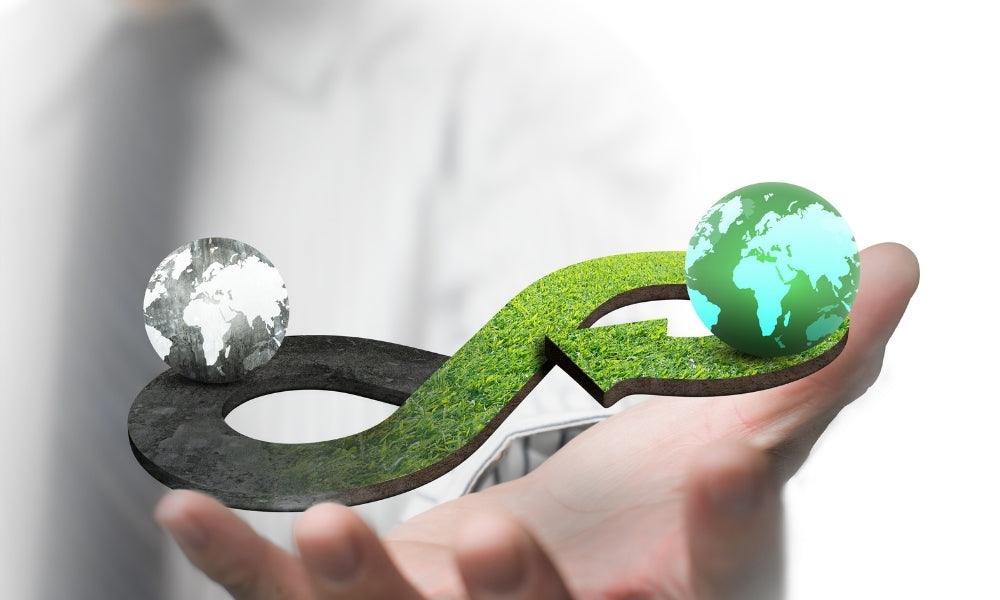Circular Economy - What is it?
What is Circular Economy and how to be part of the movement?
The Circular Economy is an economic model based on reduction, reuse, and recycling. Its goal is to minimize waste, extending the lifespan of products as much as possible. When this life cycle ends, all elements that would be wasted are reused to manufacture new products, thus reducing the extraction of raw materials from the environment and the production of toxic substances for the planet.
This concept arose from the need to counter the trend of population growth and the consequent pressure on natural resources, which are scarce. The circular economy opposes the current production system: the linear economy, based on the process of extraction -> production -> use -> disposal. In this unsustainable economic model, products are made from raw materials extracted from the Earth and, when they reach the end of their life cycle, they are thrown away, with almost no reuse.
Every year we use natural resources increasingly faster. In 2019, July 29 was the date on which we consumed what was intended for an entire year, with 5 months still remaining. The resources of the Planet Earth are finite and increasingly scarce. The extraction of raw materials for the manufacture of products consumed by humans directly results in enormous energy expenditure and emissions of polluting gases into the atmosphere.
A radical change in the production chain, in the use of resources and even in the way we consume is becoming increasingly urgent. The transition to the circular economy is the answer to the environmental problems caused by the linear model, but it implies a total change of paradigm in social and economic organization.
But how to contribute to the circular economy?
REUSE
The main way is to reuse, and this applies to everything, whether it's a smartphone, a piece of clothing, or a plastic bag. Do not throw away products unnecessarily and use them until they are completely useless. If the product has suffered some damage, try to repair it instead of buying a new one. And if it no longer meets your needs at all, find someone who wants it instead of getting rid of it.
RECYCLING
If it is no longer possible to reuse, make sure to recycle it properly. Nowadays, it is possible to reuse almost all types of waste, even electronic! By recycling properly, materials or products that would be wasted will have a new life, entering the circular economy.
Note: In the case of electronic equipment, make sure to NOT throw it into the regular trash. At http://www.ondereciclar.pt/ you can find the nearest electronic waste collection centers to ensure they are recycled properly.
CLOTHING
In the last 15 years, humans have doubled the production (and consumption) of clothing. Beyond these worrying figures, these same clothes are worn less and less and end up in the trash. The fast fashion industry is the second most polluting industry in the world. This industry produces clothing very quickly, usually in underdeveloped countries, with very cheap and polluting materials, thus obtaining a final price accessible to most buyers.
The solution is not compression with brands without sustainable values. Look for stores in the local market that practice fair prices, use quality materials, and qualified labor. Buy only what you need and know that you will use it and not consume it on impulse. Look for better quality pieces that last longer. It may cost more upfront, but it is clothing that lasts much longer. Also look for second-hand clothing stores, with very attractive prices and 100% reused products. Finally, clothes or shoes that you will no longer use can be sold or donated.
FOOD
Currently, the food industry follows a mass production model to meet the growing needs of the population and consumerism. 31% of the food produced does not even reach the plate, and ends up being wasted. According to the United Nations (UN), food waste causes 10% of greenhouse gases.
To contribute to a more sustainable food economy, you can start by not wasting it. Whenever possible, buy the right amount of food so that there are no leftovers. Consume foods produced in a regenerative and local way, ensuring their natural origin. Did you know you can use orange peel to make tea? The peel is rich in vitamin C and is good for your health.
ELECTRONIC PRODUCTS
In 2018, 48.5 million tons of electronic waste (e-trash) were produced on the planet. In 2019, that number rose to 53 million tons. Of this number, only 17% was properly recycled. A study conducted by the UN estimates that by 2050 we will produce about 120 million tons of electronic waste.
According to a Marketwatch study, users buy a new phone on average after 15 months. Whether due to the desire to have the latest model, or due to damage whose repair costs almost as much as a new device. The most effective way to contribute to the circular economy in electronics is to extend the lifespan of devices by taking good care of them. This way, buying a new one so frequently is avoided and, consequently, all the environmental costs associated with its production.
Always choose to repair instead of replace.
If you really need to buy a new electronic device, you can opt for a Refurbished one. These are products that were discarded by the last user, underwent thorough maintenance and replacement of some parts, and returned to the market at a much more affordable price with a 1-year warranty. This type of refurbishment gives new life to technological equipment and contributes to the circular economy model. The refurbishment market has prevented the waste of thousands of tons of electronic waste per year.



Share this article:
Computer or laptop? Which is better?
TIPS TO SURVIVE LOCKDOWN